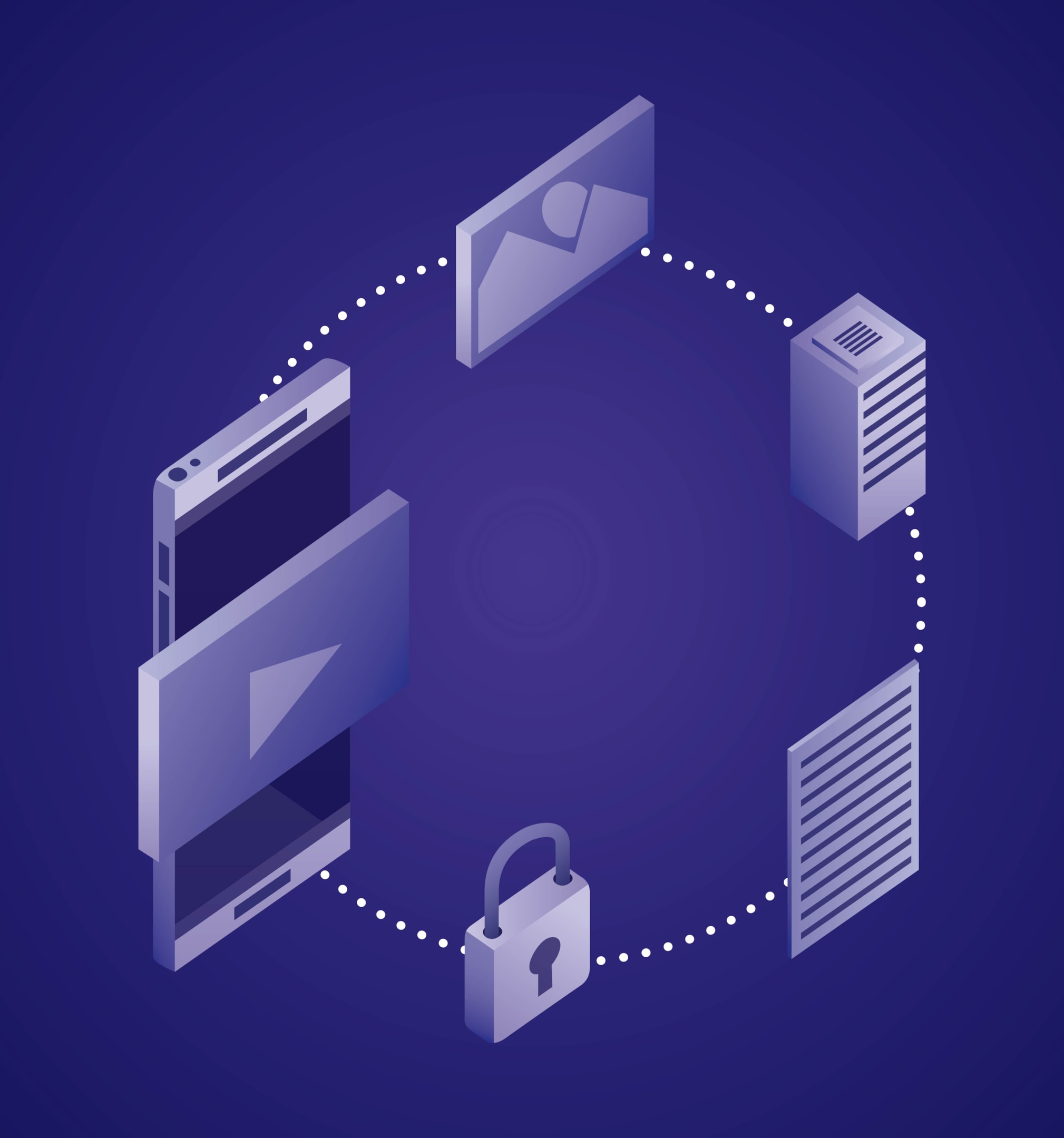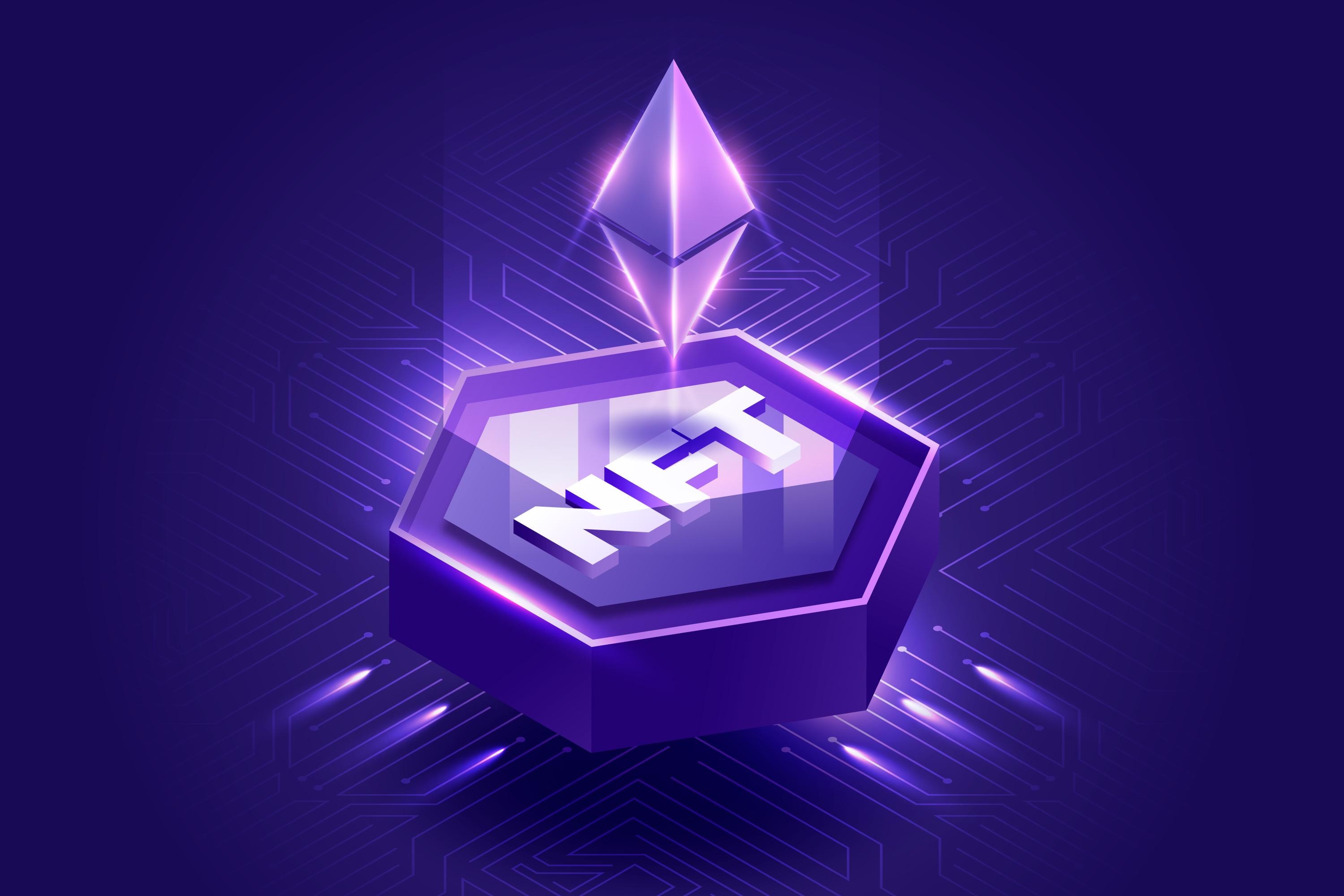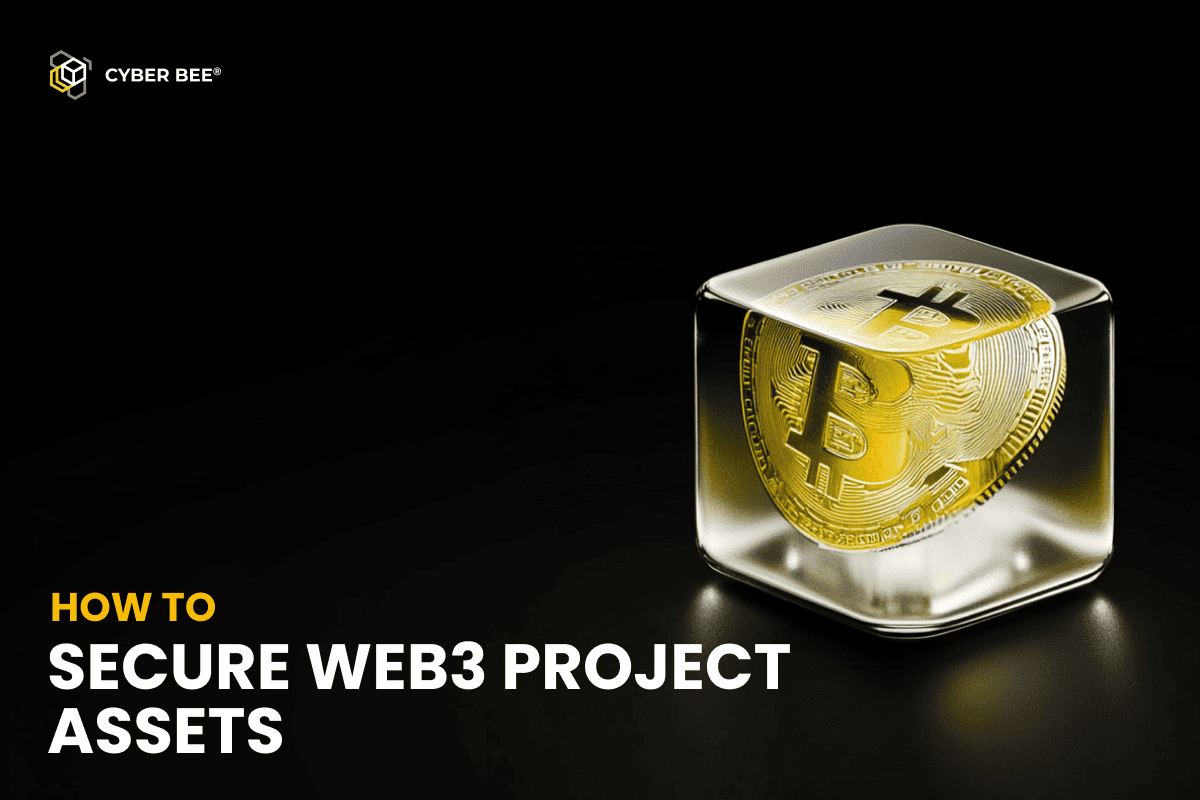In today’s digital world businesses are always looking for new ways to increase security, transparency and efficiency. Enter blockchain technology, the game changer that’s disrupting industries and enabling businesses to operate on a whole new level. By using decentralized networks and secure cryptographic protocols blockchain is a powerful tool for streamlining processes, building trust and opening up new possibilities. But how do businesses implement this technology? This guide goes deep into blockchain implementation and gives you the knowledge and insights to navigate the process and get the most out of blockchain for your business.

Source: Freepik
Understanding Blockchain — The Underpinnings For Secure Transactions
This section prepares us to understand how the blockchain implementation goes on. We will cover the fundamentals of blockchain technology, and how this can translate into secure transactions that drive trust in businesses.
Blockchain Basics
Let’s look at the fundamental components of blockchain technology.
Decentralization: Without third party(gateway)
When it comes to business, traditional models depend on central authority to authenticate transactions. Blockchain implementation solutions are bucking this trend by employing instead, decentralized networks. No one body is in control of these networks. However, in this network participants support the chain together and no intermediaries are needed thus reducing costs. The use of a localized solution helps advance transparency and lessens our reliance on trusted third parties.
Transparency & Trust with Immutability
Immutability: One of the strongest features provided by blockchain technology. Each block contains transactions on a blockchain, and blocks are cryptographically linked with the previous. This will generate a tamper-proof ledger which means once the data is recorded there can be no further changes or delete.setDate(pubDate, now> 1); Its immutability provides it with a universally and verifiably consistent transaction record, which permits all the network participants to trust each other.
Security: Building on a Cryptographically Secure Foundation
Whatever the business may be, security is of prime importance. These include solid security measures put in place to secure data and transactions from a blockchain solutions perspective. A security backed by cryptography and consensus protocols. By using a series of complex algorithms, cryptography encrypts data to make it completely garbled for others — but not the receiver. The consolidated protocols are agreed upon by all participants in the network. This makes transactions more secure on top of others, providing further improvement to this security for the blockchain.
Now that we have the basics down — decentralization, immutability and security–we can see how blockchain technology has grown so powerful over this concept of new approach proving secure transactions plus trust (for business).
Real-World Example: Cyber Bee’s Secure NFT Marketplace

Let’s take a look at a real world example of blockchain technology – Cyber Bee’s secure NFT marketplace. This marketplace shows how blockchain’s principles can be used to change the world of digital assets.
Using Blockchain Network for Decentralized NFT Trading
NFT marketplaces are traditionally centralised where one platform controls the transactions and user interactions. Cyber Bee’s marketplace disrupts this by using a decentralized blockchain network. This network allows users to:
- Trade with each other: By removing the need for a central authority, users can trade NFTs peer to peer. This decentralised approach increases autonomy and potentially reduces transaction fees.
- Control their NFTs: NFTs represent ownership of digital assets. The blockchain ledger is a secure and transparent record of NFT ownership. Users can be sure their ownership rights are immutable and verifiable on the network.
NFT Ownership Immutability on the Blockchain Ledger
As we’ve seen above, immutability is a key part of blockchain technology. In Cyber Bee’s NFT marketplace this means that:
- Ownership records are tamper proof: Once an NFT is minted and ownership is recorded on the blockchain ledger, that record can’t be altered or deleted. This immutability protects users from fraud and gives a clear ownership chain for each NFT.
- Ownership history transparency: The immutable blockchain ledger gives a complete and verifiable record of ownership history for each NFT. This transparency builds trust between buyers and sellers in the marketplace.
User Friendly for NFT Trading
In addition to using blockchain’s core principles, Cyber Bee also prioritises user experience. The NFT marketplace has a user friendly interface that:
- Makes NFT trading easy: A good design can make complex things like NFT trading more accessible to a broader audience. This user centric approach can drive user adoption and the success of the marketplace.
- Security through user experience: Intuitive features can guide users through secure transactions and NFT custody. This user experience can contribute to the overall security of the platform.
By using a decentralised marketplace with immutability and user experience, Cyber Bee’s NFT marketplace shows how blockchain can change the way we interact with digital assets.
Blockchain Implementation for Business: A Step by Step Guide
Now that we’ve seen the principles of blockchain, let’s get into the practicalities. This step by step guide will help you understand the process and how to use blockchain for your business.

Source: Freepik
Defining Your Business Case: Where to Apply Blockchain
First you need to have a reason to use blockchain technology in your business. This means doing a business case analysis. Here are the key points to consider:
- Identifying pain points: Review your current processes and find areas where there are inefficiencies, lack of transparency or security vulnerabilities. Blockchain can potentially solve these pain points by streamlining processes, building trust and securing data.
- Assessing the fit with blockchain: Not every business problem is a good fit for blockchain. Analyse whether the core principles of blockchain (decentralisation, immutability and security) match your specific needs and will give you a better solution than what you have today.
Choose Your Platform and Consensus
Next you need to choose the right platform and consensus mechanism for your blockchain. Here’s a breakdown of these terms:
- Blockchain platform: This is the underlying software framework that allows you to develop and deploy your blockchain application. Popular options are Ethereum, Hyperledger Fabric, R3 Corda. Each platform has its own features and functionality so you need to choose the one that fits your project requirements.
- Consensus mechanism: In a decentralised network, a consensus mechanism ensures all participants agree on the transactions. Common consensus mechanisms are Proof of Work (PoW) and Proof of Stake (PoS). The chosen mechanism will impact scalability, security and transaction validation time.
Public vs. Private vs. Consortium Blockchain Network
There are three main types of blockchain network to choose from:
- Public blockchain network: These are open to anyone to join. Examples are Bitcoin and Ethereum. While they offer high transparency and security, public networks are slower and more expensive for transaction processing.
- Private blockchain network: These permissioned networks are for specific groups of participants, offer more control and potentially higher transaction throughput than public networks.
- Consortium blockchain network: These are collaborative networks where a consortium of organisations govern the network. They offer the openness of public networks and the control of private networks.
Choosing a Consensus Mechanism for Fast Transaction Validation
As mentioned earlier, the consensus mechanism is key to getting all participants to agree on the transactions. Here’s a closer look at two options:
- Proof of Work (PoW): This mechanism used by Bitcoin requires miners to solve complex mathematical puzzles to validate transactions. While secure, PoW is energy hungry and slow.
- Proof of Stake (PoS): This alternative mechanism uses validators who have a stake (ownership of cryptocurrency) in the network. These validators verify transactions. PoS is more energy efficient and scalable than PoW.
By considering these three factors – platform, consensus mechanism and network type – you can build a solid foundation for your blockchain implementation. Understanding how transactions are verified on your chosen platform is also important. To learn more about this process read:
How is a Transaction Verified on a Cryptocurrency Network?
Smart Contracts — Automating Business Logic to the Blockchain Platform
SMART CONTRACTS — They are blockchain based and self-executing contracts. Automizing the rules and agreements among its members. Something of a pure play vending machine style model — users interact with the interface, they satisfy conditions and then voila: smart contract kicks-off whatever it was supposed to do.

Source: Freepik
So how do they work in a smooth and secure blockchain?
Workflows Automation — Smart contracts can automate the majority of business workflow no manual intervention and thus decrease human errors. That can save a lot of time and be very beneficial in their operational process.
Business rules are compliance: The smart contract code is the agreement itself. When it is deployed, the smart contract runs on its own so that preset rules are followed in an immutable way with no scope of manipulation.
Enhance trust and transparency: As the smart contracts automate agreements, they also put them in the blockchain-ledger which resulting in a substantial increase among participants. This is visible to all parties as they can verify the terms of agreement and its execution on a blockchain.
Smart contracts have to be developed in programming languages created for writing them in blockchain environment, ex.: Solidity used by Ethereum.
User Interface and How This Map to Blockchain Integration in Building the Application
The user interface (UI) is the front-end of your blockchain application, where user interact with a network. Here’s how UI and integration come together:
- User-friendly interaction: A good UI simplifies complex blockchain interactions, makes the technology accessible to a larger audience. This is key to user adoption and success of your blockchain.
- Integration with the blockchain platform: The UI connects users to the chosen blockchain platform. This integration allows users to see data on the blockchain, initiate transactions and interact with smart contracts.

Source: Freepik
Building the UI involves using traditional web development technologies along with libraries and frameworks for blockchain applications.
Accountability: Building Security in Blockchain Network.
Security and blockchain go hand in hand. Key considerations for a powerful and secure solution:
- Smart contract security audits: Blockchain consisting of the smart contracts In a smart contract security vulnerabilities it leads to the loss of huge financial losses. And, yes,, you better believe security experts are doing audits to find holes before deployment.
- Great secure coding practices: It is necessary to implement good secure coding practice for writing smart contracts. This includes also reusing libraries in case they are well-maintained and avoiding frequent security issues happening like common coding mistakes.
- Key management: Cryptographic keys are used to secure access to blockchain wallets and control transactions. Strong key management is necessary to prevent unauthorized access and protect digital assets.
- Network security: The overall network security also plays a big role. Understanding the chosen platform’s security features and vulnerabilities is important to mitigate risks.
By security throughout the development and implementing strong measures you can have a blockchain system that is attack proof and user friendly.
Benefits and Costs of Blockchain Technology Implementation
Now that we have covered the basics and implementation, let’s look into the benefits and costs of having blockchain technology in your business.
Security and Transparency: Trust in Your Operations

Source: Freepik
Blockchain has security and transparency. Here’s how:
- Immutable data record: Transactions on the blockchain are tamper proof and permanent. This immutability builds trust and reduces data fraud or manipulation.
- Better traceability: Blockchain technology is good at tracking assets through the supply chain. This improved traceability increases customer confidence in product provenance and authenticity.
- Decentralized security: Blockchain networks are decentralized so there is no single point of failure, more resistant to attacks than centralized systems.
By using these security and transparency benefits businesses can build stronger relationships with stakeholders and improve their reputation.
Simplify and Reduce Costs: Automate with Smart Contracts
Smart contracts are a big game changer when it comes to simplifying and reducing costs. Here’s how:
- Automated workflows: Smart contracts eliminate manual intervention in pre-defined agreements. This can greatly improve efficiency and free up resources for more important tasks.
- Less errors and disputes: Self executing smart contracts minimize human error and disputes that can arise in manual processes.
- Potential cost savings: By automating and reducing errors smart contracts can lead to cost savings in the long run, operational efficiency.
More Efficiency and Scalability: Growing with Your Business
As your business grows your technology infrastructure should too. Blockchain offers:
- Scalability: Some blockchain platforms are designed to scale efficiently so they can handle more transactions as your business grows.
- Faster transaction processing: Compared to traditional systems some blockchain platforms can process transactions faster, operational efficiency.
- Better data management: Blockchain technology has a secure and transparent way of managing data, data sharing and collaboration with partners.
Challenges: Regulatory and Scalability
While promising blockchain is still a developing field. Here are some challenges to consider:
- Regulatory uncertainty: The regulatory landscape around blockchain is still evolving. Businesses need to be aware of the current regulations and stay informed as they develop.
- Scalability limitations: Some platforms have scalability but not all blockchain networks are ready for large enterprise applications.
- Technical expertise: Implementing blockchain technology solutions requires technical expertise. Businesses may need to upskill their team or partner with a development team.
Cost: Factors that affect the cost of blockchain implementation
The cost of implementing blockchain will vary depending on:
- Platform and infrastructure: Different blockchain platforms have different licensing costs and infrastructure requirements.
- Project complexity: The scope of your project will impact development costs.
- Smart contract development: Developing secure and efficient smart contracts requires specialized skills and these costs will vary depending on the project.
- Ongoing maintenance: A secure and operational blockchain requires ongoing maintenance costs.
By weighing up these benefits, costs and challenges businesses can make an informed decision on whether and how to use blockchain.
Cyber Bee: Harness the power of blockchain

Source: Freepik
We’re not just following the blockchain trend – we’re leading the way. Our team of experienced developers have delivered many successful blockchain projects across various industries (finance, healthcare, supply chain, etc). We use blockchain to:
- Transparency and traceability: We build secure and transparent solutions that track goods movement, share data and build trust in complex systems.
- Process optimization and cost reduction: Our smart contract development expertise automates workflows, removes manual intervention and saves our clients money.
- New applications: We work closely with clients to develop custom blockchain solutions to their business problems.
Our blockchain implementation approach: Client focused and secure
At Cyber Bee we know every business is unique. That’s why we take a client focused approach to blockchain implementation so the solution is tailored to your business goals and regulatory environment. Here’s what sets us apart:
- In-depth Consultation and Market Research: Our collaborative process starts with a consultation to understand your business goals, industry landscape and potential pain points. We then use our market research expertise to identify the most suitable use case for blockchain in your business. It indicates that the solution of your blockchain is tailored according to help you achieve actual business value.
- Proof of Concept (POC) Development: POC will be developed before we start full implementation. This is so that you may test the practical side of your Blockchain solution in a defined environment. Our experienced team of developers will deliver a tailored POC experience and determine whether or not the idea your pursuing is worth investing into.
- Secure Development with Regulatory Compliance: Security for Blockchains and Secure Development We utilize industry best practices, code audits and secure development methodologies to protect the integrity and resilience of your blockchain implementation. This is followed by the Adaptation category which focuses on changing regulations around blockchain that our team must be aware of. We help you to sail through the maze of regulations with auditing your application and adhering all compliances.
- Scalable Solutions and Seamless Integration: We do not just build for today; we build together for tomorrow.We consider future growth and scalability needs when designing your blockchain architecture, using proven data structures and cryptographic algorithms so your system can grow with your business. We also excel at integrating blockchain solutions with your existing systems and infrastructure, minimising disruption and maximising efficiency.
- End-to-End Support and Governance Model Design: Our association doesn’t stop only at development. We perform constant maintenance and monitoring to keep your blockchain solution live and secure. We advise you in setting up a governance model which specifies decision making processes and the role of participants on your blockchain network.
Get Deep Into Tech: The Design of A Secure Blockchain Solution
The principles of blockchain stay the same, but specifics can differ in technical implementation depending on the platform and functionality. With the help of our expertise professional at Cyber Bee in different blockchain development tools and techniques to build secure, scalable solutions. Here’s a look under the hood of our secure NFT marketplace:
- Blockchain Development with Choice: We are proficient in a range of programming languages and frameworks for blockchain development. Our developers can use languages like Solidity, a high level language for smart contracts on the Ethereum Virtual Machine (EVM) or explore alternative frameworks like Hyperledger Fabric for permissioned blockchain network for specific industry needs.
- Open Source Platform Expertise: Most people are familiar with mainstream open source blockchain protocols. Either, leverage the existing functionality and focus of Ethereum with well earned community developer help for public deployments or design custom blockchain solutions targeted to private consortia using Hyperledger Fabric’s modular architecture. With our experience in using many platforms, we can help you to choose the right platform for your project as well.
- Secure Data Structures and Cryptography: The data that goes in the blockchain should be secure, as security is what everyone cares about. We make use of immutable and easily verifiable robust data structures, such as Merkle Trees. Similarly, we use cryptographic algorithms like Hashing to make sure transactions within your blockchain network are genuine which keeps the confidentiality.
- Consensus Mechanisms: Beyond Proof of Work: Beyond PoW While Proof of Work (PoW) has become the consensus mechanism most familiar to us, we appreciate its scalability problems and increasingly-stark environmental costs. Exploring alternative consensus mechanisms such as Delegated Proof of Stake (DPoS) and Byzantine Fault Tolerance protocols, depending on your project requirements. Unlike other mechanisms, BFT provides higher fault tolerance which is essential for scenarios where data integrity and network availability are of utmost importance even in presence of malicious actors.
As we have mentioned above, to avoid such invalid ones from being included in both forks it require even more coordination and communication between validators than PoW or DPoS. This could mean a lower transaction time and more scalability in some applications. On the other hand, BFT implementations tend to be more challenging and resource intensive both in deployment set-up as well support life cycle.
- Private Blockchains for Permissioned Access: These private blockchains are designed for scenarios where only a specific set of users need to be granted access and the solution should comply with regulatory constraints. A private blockchain provides better privacy, data processing capacity control and allows a low cost joining of the network for use cases sensitive to these factors.
- Test Network: A Safe Sandbox for Development: We stress the importance of thorough testing before deploying your blockchain solution to mainnet. Our development process includes the use of a dedicated test network, a secure environment that mimics the real world blockchain but allows safe development, pilot testing and refinement of your solution before public deployment.
- Hybrid Solutions: The Best of Both Worlds: A hybrid approach that makespeppy use deals with the publicand private blockchains can often provide an answer here. We can design a mix of security and transparency by using public blockchains for what it should be or use the privacy and governance capabilities if required we ever need to.
- Decentralized Applications (dApps): In case your project needs a user facing application for interacting with the blockchain we can either develop or integrate dApps. These dApps act as a medium to allow users access your blockchain solution and be able to easily interact with it in well-secured manner.
By knowing the technical details and using our experience with various blockchain development tools Cyber Bee can help you build a secure and scalable blockchain solution that meets your business needs. We are platform agnostic, follow security best practices and look for innovative solutions to deliver a future proof blockchain architecture for your project.
Conclusion: Blockchain for the Future
Blockchain will change the way business is done. This guide has covered the basics, technical and real world applications of blockchain.
In a Nutshell: Blockchain for Business
By using blockchain technology businesses can:
- More security and transparency: Blockchain’s immutable ledger builds trust and reduces fraud. Transactions are recorded on a distributed network of computers so they are tamper proof and have a clear audit trail.
- Faster processes and lower costs: Smart contracts automate workflows, eliminate manual intervention within a blockchain project and can save costs. This creates a more efficient blockchain than even the Bitcoin blockchain.
- More efficiency and scalability: Blockchain platforms can handle growing business needs with more efficiency and scalability. Unlike traditional databases blockchains can handle millions of transactions without slowing down.
- Create new solutions: this technology unlocks applications that could solve unique business needs. The possibilities range from distributed finance for DeFi to enterprise blockchain solutions.
Implementing blockchain requires a lot of thought and many things must be taken into consideration. The most useful information is distributed ledger technology as it employs the same principles; however there are many others:
- Financial transactions vs non financial transactions : At present blockchain can be employed for financial transactions with one’s bank; they can also be used for non financial transactions like supply chain management.
- Blockchain nodes : Every computer on the internet that is part of the blockchain is a node. The Consensus Protocol gives guidance on how nodes will agree they have the right transaction.
- Blockchain security : Clearly, security must be of paramount importance, and security is ensured by the consensus protocols which can take any number of forms like Proof of Work or Proof of Stake.
- Transaction costs : The cost of executing a transaction varies between platforms, it may also depend on how many people are using the network as the user carrying out the transaction is the one that pays the processing costs. For example, a company paying it’s employees in bitcoin may find the transaction costs rise as the number of developers working on the blockchain increases.
- Peer to peer network : It is essential to remember that a blockchain is a peer to peer blockchain network, that is transactions do not go through a central authority, and for this reason security must be excellent.
Finally, it needs to be remembered that whereas in many respects air travel is similar to going on a car ferry or a bus, the semi decentralized control essential to air travel is quite unlike that to be found in cars and buses. Similarly, moving from centralized to decentralized will make some aspects of blockchain, like privately owned coins unsuitable for some used. However, some hybrid solutions that give some balance between public and private blockchains may be suitable for particular niches.
Here’s how blockchain technology can facilitate business processes:
- Payment processing: Blockchain network can speed up cross border payments and reduce processing time.
- Smart contracts: Self executing contracts automate agreements, reduce manual intervention and errors.
- Benefits across industries: Finance, healthcare, supply chain management, voting systems and more.
Blockchain is not a one size fits all solution. Consider:
- Scalability: Can the platform handle the expected transaction volume?
- Data privacy: Decentralised systems raise privacy concerns. Careful consideration of data storage and access controls is needed.
- Regulatory compliance: Ensure your blockchain implementation is compliant with the relevant regulations.
- Existing infrastructure: How can blockchain platform be integrated with your existing systems for a smooth transition.
By working with a blockchain development team you can navigate the complexities of blockchain and unlock the benefits.
Next Steps: Blockchain Implementation for Your Business
Now that you have this knowledge, you should know what you need to do to implement a blockchain solution for your business. At Cyber Bee, we love helping businesses implement blockchain and realize the benefits. We can provide you with a complete range of services, from your first consultation and strategy to secure implementation and ongoing support. Contact us at Cyber Bee today to tell us more about what you need and how blockchain can transform your business



